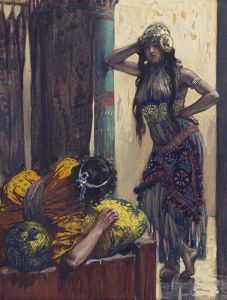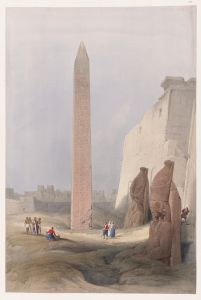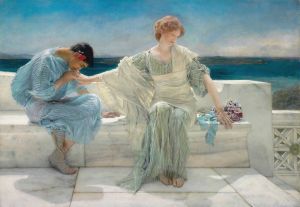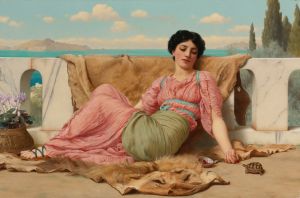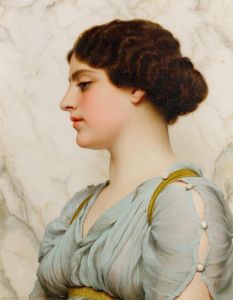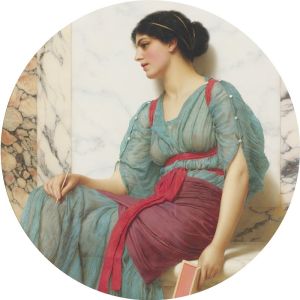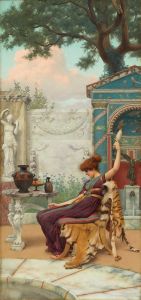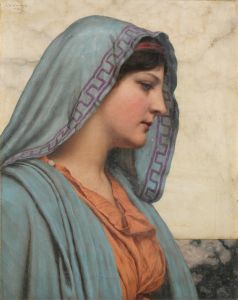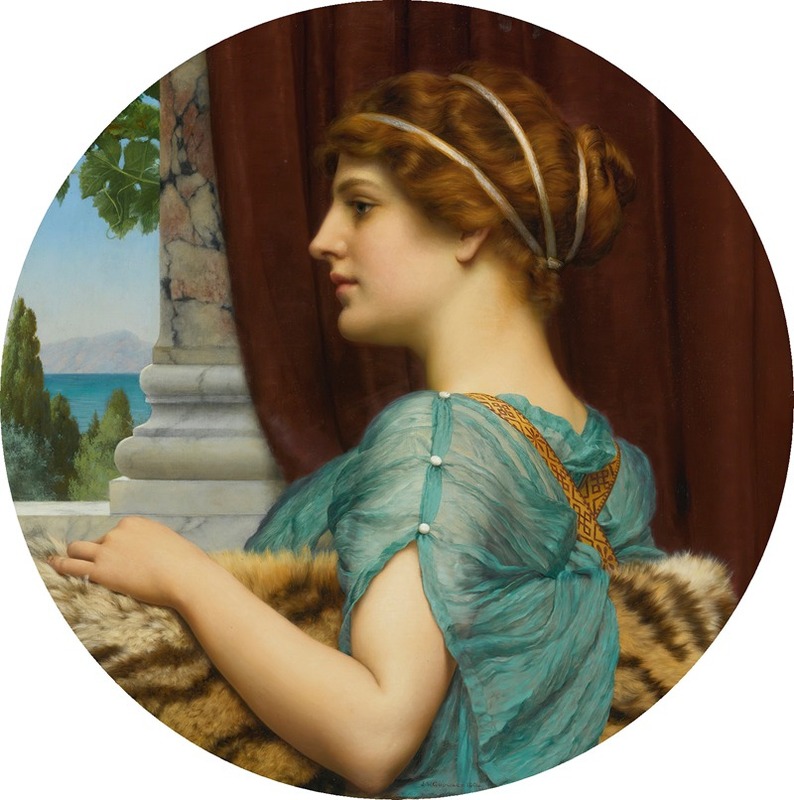
A Pompeian Lady
A hand-painted replica of John William Godward’s masterpiece A Pompeian Lady, meticulously crafted by professional artists to capture the true essence of the original. Each piece is created with museum-quality canvas and rare mineral pigments, carefully painted by experienced artists with delicate brushstrokes and rich, layered colors to perfectly recreate the texture of the original artwork. Unlike machine-printed reproductions, this hand-painted version brings the painting to life, infused with the artist’s emotions and skill in every stroke. Whether for personal collection or home decoration, it instantly elevates the artistic atmosphere of any space.
"A Pompeian Lady" is a painting by the British artist John William Godward, created in 1904. Godward was a prominent figure in the late 19th and early 20th centuries, known for his classical style and meticulous attention to detail. He was part of the Neoclassical movement, which sought to revive the art and culture of ancient Greece and Rome.
The painting depicts a young woman dressed in traditional Roman attire, standing against a backdrop that evokes the ancient city of Pompeii. The subject is adorned in a flowing, diaphanous gown, which is characteristic of Godward's fascination with the textures and patterns of classical clothing. Her serene expression and the delicate rendering of her features are typical of Godward's idealized portrayals of women.
Godward's work is often noted for its high degree of realism and the artist's skillful use of color and light. In "A Pompeian Lady," the artist employs a rich palette to bring out the vibrancy of the woman's attire and the surrounding environment. The background features architectural elements and decorative motifs that are reminiscent of those found in the ruins of Pompeii, which had been extensively excavated in the 18th and 19th centuries, providing a wealth of inspiration for artists of the period.
The painting reflects Godward's interest in the daily life and aesthetics of ancient Rome. By choosing Pompeii as the setting, he taps into the fascination with the city's tragic history and its sudden destruction by the eruption of Mount Vesuvius in 79 AD. This historical context adds a layer of poignancy to the work, as it captures a moment frozen in time, much like the city itself.
John William Godward was known for his meticulous technique, often spending considerable time perfecting the details of his compositions. His works are characterized by their smooth, polished surfaces and the careful rendering of textures, from the softness of the fabric to the hardness of marble. "A Pompeian Lady" exemplifies these qualities, showcasing Godward's ability to create lifelike representations that are both beautiful and evocative.
Despite his success during his lifetime, Godward's work fell out of favor with the advent of modernist movements in the early 20th century. However, there has been a resurgence of interest in his paintings in recent decades, as collectors and art historians have come to appreciate the technical skill and aesthetic appeal of his work.
"A Pompeian Lady" remains a testament to Godward's dedication to the classical tradition and his ability to transport viewers to another time and place. The painting is a fine example of his oeuvre, highlighting his talent for capturing the elegance and grace of his subjects within the context of ancient history.





